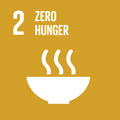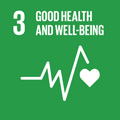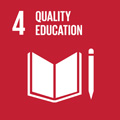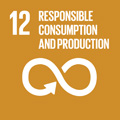- Docente: Marcello Trevisani
- Credits: 3
- SSD: VET/04
- Language: Italian
- Teaching Mode: In-person learning (entirely or partially)
- Campus: Bologna
- Corso: First cycle degree programme (L) in Animal Production (cod. 8882)
-
from Nov 19, 2024 to Dec 12, 2024
Learning outcomes
Students will learn the how pathogenic, toxigenic and spoilage micro-organisms are controlled in the food production processes and what are the criteria used to evaluate and manage the risks. Students shall be able to detect and use critical control points for managing the biological hazards and to draft HACCP manuals for food business operators.
Course contents
1. Microorganisms and food characteristics: basic principles of food processing and preservation(T 4 hours).
2. Use of predictive models to estimate the growth, survival and inactivation of microorganisms in the food processes. Combase software (4 hours P).
3. Food contamination monitoring and food-borne disease surveillance (2 hours T).
4. Etiologiocal, epidemiological and clinical aspects and pathogenesis of salmonellosis, campylobacteriosis and infections by entheroemorragic Escherichia coli strains. Biosecurity and surveillance of salmonellosis at farm and slaughetrhouse (4 hours T).
5. Hygiene and technologies in the slaughterhouse (2 hours T)
6. Hygiene on the dairy farms and microbiological characteristics of raw milk (2 hours T)
7. Heat treatments and physical sterilization of milk (pasteurization, UHT, microfiltration) and aseptic packaging methods (2 hours T).
8. Food Botulism: pathogenesis, epidemiology and control methods. Hurdle theory, role of salt, additives and starter cultures in aged meat products (2 hour T)
9. Listeriosis: pathogenesis, epidemiology and control methods (2 hours T)
10. Cleaning, disinfection and pest control in the food industry (2 hour T)
11. Process controls: sampling and monitoring plans, HACCP and the audit procedures (4 hours T)
12. Food operations self-control and structural requirements in food industry (2 hours P)
Readings/Bibliography
Autori Vari (a cura di Colavita Giampaolo). Igiene e tecnologie degli aliemnti di origine animale. Point Veterinaire Italie, 2008. Presentations (slides) available on the AlmaDL server (materiale didattico).
Teaching methods
The course consists of lectures (24 hours) and practical lessons (6 hours)
a. lectures
The lectures provide an illustration of the supply chains of food production (meat, milk and dairy products, eggs) in order to make the students appreciate what aspects are most critical and how the implementation of good hygiene practices and controls process to guarantee food security in compliance. For the constraints of time and availability of facilities (slaughter faculty, stable and dairy) will be used also videos and pictures to facilitate the understanding of the different, important production chains.
b. practical lessons
Case studies will be used to evaluate the control methods for the microbial hazards in food by adopting a predictive microbiology approach .
At the veterinary campus slaughterhouse and dairy the students will approach the hygiene auditing in beef slaughterhouse and the use of checklists for slaughterhouse structure.
Assessment methods
The examination at the end of the course aims at assessing the achievement of the main learning objectives:
1) Knowledge of food technology (used in processing the meat, milk and dairy products, eggs and fish products) hazard assessment (raw materials and processes) of control measures (CCP) and the principles of hygiene.
2) Ability to collect data and information on the microbial contamination of food and appreciate the pathogenic mechanisms, the potential for growth and survival in foods of the main biological agents responsible for diseases with food and their ability to resist treatment of storage and preparation food for consumption.
The final grade of the course "Safety and food hygiene" consists of the synthesis of the final evaluations of the integrated courses that compose it. The course is part of the Integrated Course 05684 - Microbiology Applied to Animal Production and Food Hygiene (CI) - Food Hygiene, therefore, the verification will be carried out only at the end of the lessons of all the teachings mentioned.
The evaluation of the students consists of a written test that aims to evaluate the ability to make choices in the management of food safety through the application of HACCP principles. The test is preferably done at the end of the course and consists of: six multiple-choice questions and two short-answer questions (each 0.5 points); a short paper (15 lines) on a topic assigned and a numeric answer relative to risk assessment (2 points). This can be given with the support of predictive microbiology software (Combase). The total score of these quizzes is 10 and will be published on the Alma Esami platform. The students can see their result in the 'student career'
The evaluation of the paper will be made by the teacher on the basis of the accuracy and ability to answer and argue in a clear, albeit concise, way.
During the practical exercises, students will be guided in the use of estimation models and in the analysis of risk factors. Test tests, similar to those the teacher uses for the exam, are available on the 'virtual' didactic portal. Students will be able to take or repeat the written test also in the sessions (winter and summer window). The 'Combase' test will take place in the 3 days preceding the exam dates (response time 45 minutes) through the Online Exams (EOL) platform. On the day of the exam, in the same way, there will be a written test on the other topics of the course. In informing the students of the results, the teacher will indicate, if there is at least a sufficient score, which were the main topics in which gaps emerged. Students can decide to take an integrative oral exam that will focus on these specific points. The answers will allow to improve the evaluation.
The evaluation is expressed with a mark out of thirty for the exams. The test is passed with a score of at least 18/30. The student has the right to refuse the verbalization of the proposed positive grade. Students with DISABILITIES or SLDs must contact the teacher to have adaptations to teaching during the lesson phase or in the final evaluation phase. They will do it by email, by entering the reference staff they are followed by the faculty in the C/C.
Teaching tools
Keynotes of lectures and didactic documents used for the practical training are published in the UniBo server 'virtuale, virtual learning environment'. Textbooks are available at the Department's library.
Office hours
See the website of Marcello Trevisani
SDGs




This teaching activity contributes to the achievement of the Sustainable Development Goals of the UN 2030 Agenda.
